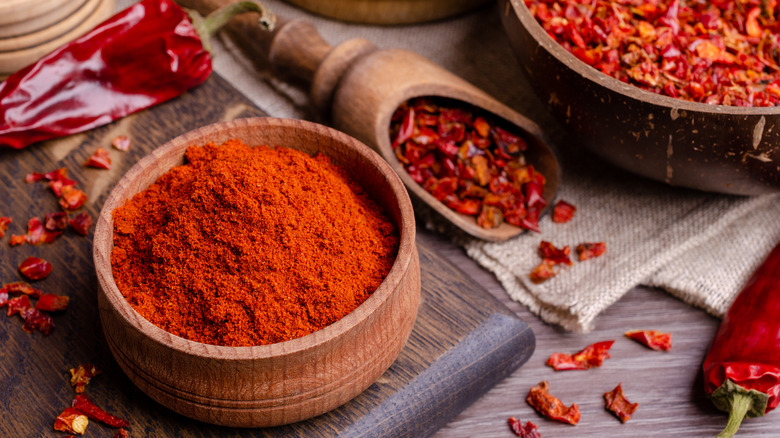The Game-Changing Spice To Add To Your One-Pot Chicken And Rice
Is there anything more comforting than chicken and rice? It's believed the pairing originated on the small island of Hainan, which is off the coast of China. There, chicken is first poached, then the stock is used to make a flavorful rice (via The Culture Trip). However, just about every culture has some version of this simple, versatile dish — like Arroz con Pollo in Mexico, jambalaya in the U.S., galinhada in Brazil, and jollof rice in West Africa — making it a classic pairing (via Delishably).
Recipe developer Christina Musgrave's 30-minute, one-pot chicken and rice recipe is the perfect dinner solution for busy weeknights. It's not only quick, filling, and healthful, but clean-up is a breeze. And Musgrave's version adds one simple ingredient that brings the dish to a whole new level: Paprika. But, she doesn't add just any paprika to the dish. Instead, she's selected one particular preparation of the spice.
Smoked paprika gives chicken and rice 'great dimension'
According to recipe developer Christina Musgrave, adding smoked paprika to chicken and rice elevates the simple dish by giving it "a great dimension of flavor," making it "super delicious."
You might be tempted to swap out the smoked paprika for jar of plain stuff sitting in your spice cabinet, however you'll be missing out on the flavor profile that gives the smokey spice pride-of-place in this chicken dish. According to MasterClass, there is a subtle difference between the smoked and the regular varieties that makes a big impact on taste.
Pepper Scale explains that paprika comes from the Capsicum Annuum species of peppers, which includes bell peppers, jalapeños, cayenne, serrano, and a host of others. The heat level is as expansive as the species, ranging from sweet to hot. It's believed the chili used for paprika originated in South America, in what is now Bolivia and Brazil.
Regular and Hungarian paprika is made from dried and powdered chili peppers, and its heat is mild with a sweet flavor profile. The Spanish, by contrast, smoke the pepper by slow roasting over an oak fire before drying and powdering. The heat level ranges from mild to hot and it's bold smokey flavor is perfect for more robust dishes, such as barbecue meats (via MasterClass).

